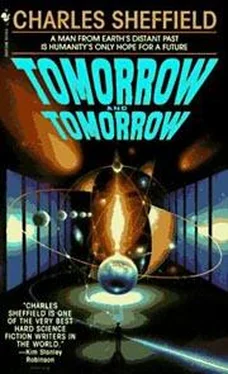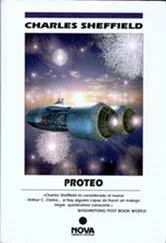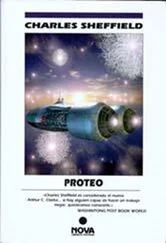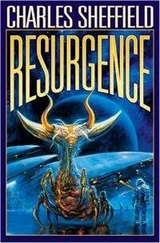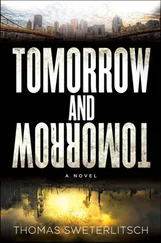To that question, and to every other direct and indirect form of approach, the colonies sent the same reply: nothing. Humans, composites, ships, sub- and superluminal signals: whatever was sent did not return. A multimillion-year silence had begun its spread across the Galaxy.
Melissa was detailing that spread, system by system, millennium by millennium, when Drake interrupted her.
“All right, I agree with you. The role that I assigned you makes no sense. So let’s change it to this: Since we don’t know anything about the Shiva, you and I will make it our job to find out.”
He knew that he was on the right track. By some means or other, by skill or subterfuge or treachery or outright murder, they had to collect information about the Shiva. He was glad that Melissa spared him the obvious question: How?
Drake no longer had organic components. His consciousness had no need for food or rest. There was no reason he could not work around the clock, every second of every day. So was it only his own stubbornness that imposed a circadian rhythm on his actions, including “day,” “night,” “sleep,” and “meals”?
He thought not. He had a logic for his behavior: since this era had failed to solve the problem of the Shiva, his own value, if any, must lie in the fact that he was a savage throwback to the earliest human times; the more that he could retain of those archaic traits, the more likely he was to offer something new (or old) and different.
He set up his own working regime. He held “breakfast briefings,” “working lunches,” “strategic planning sessions” each “afternoon,” and “end-of the-day wrap-ups.” His preference was for small groups, not more than two or three present at a time. He insisted on
taking breaks from everyone, when he could be alone to think things over.
The huge mass of composites, nineteen layers deep, did not like that approach. He could feel their impatience as an invisible pressure transmitted through his chosen six. He sent back his own message: / do things my way, or not at all.
It took nerve to stick to that, after his first meeting with Par Leon and Cass Leemu.
“It’s thirty-three million years since we had the first evidence of the Shiva,” Leon said. “The current total of known colonies that have become silent is between ninety-seven and ninety-eight billion. I do not include in this the colonies in parts of the Galaxy far from the troubled region, which have withdrawn from interaction presumably for other reasons. If you would like the numbers exactly…” And, at Drake’s impatient shake of the head, he continued, “They suggest the extinction, or at least the silencing, of almost three thousand colonies a year. But that number is highly misleading. The process began slowly and has been growing exponentially. In the past year, as you like to measure time, contact has been lost with almost seventy-five thousand colonies. Two hundred a day, one every seven minutes…
“Here are their locations.” The great spiral of the Galaxy glowed in the air before them. A curved bite had been taken from it. On the edge of that dark sector, thousands of dots flashed orange. They highlighted a thin boundary between light and dark.
“And now look here.” The orange dots vanished, to be replaced by another set a tiny step closer to the galactic center. “These, according to our best estimates, are the colonies where the Shiva may be expected to appear next.”
It seemed a minute change. Measured against the whole Galaxy, it was; but Drake was not misled. Seventy-five hundred stellar systems or free-space colonies, lost from all human contact.
“What are the composites doing about it?”
He didn’t expect a useful reply, and he didn’t get one.
Par Leon just rubbed his chin and looked unhappy. “Doing? What can we do?”
“Well, at the very least, you can warn the colonies.”
“But they already know. They have known for hundreds or even thousands of years.”
“And they’re just sitting there, doing nothing?”
“Not at all. Many have moved, closer to the galactic center.”
“Fine. So you keep moving — until a few million years from now, when the Shiva occupy the whole Galaxy. Where will you go then?”
Drake turned to Cass Leemu. “I know it’s going to take a while to inventory all of human technology, but we can’t wait. We have to do something now. Take the list you have so far and pick out the ten devices with the highest energy density. I’ll want to look at the whole list, but don’t wait for me. Get with Mel Bradley and send superluminal S-wave messages to the colonies that are next on Leon’s list. Tell them to make sure those top ten devices get built as soon as possible and are ready for use. Tell them we’ll be sending another S-wave message very soon, showing how to make the devices operate as defensive weapons against an invasion from space.”
Cass didn’t hesitate. “The list is on the table in front of you.” It was suddenly there. “It’s ready for your review, in interactive nested form. You can ask for more detail about any part of it.”
She and Par Leon vanished. Had Drake ordered them to do that? It didn’t matter. When dealing with the composites he was never sure who was doing what.
He turned to Cass’s first cut at a list of useful technology. He had given her a few ground rules that might sort devices
into an order of probable value: anything that involved huge amounts of energy, of any form; anything that performed a large-scale manipulation of time and space; anything that could be used to act as a shield to divert objects or radiation; anything able to perform planetary or stellar modification. Finally — he realized that his own ignorance might make him miss the most important defenses of all — he had asked Cass to include anything that she thought would be totally incomprehensible to Drake.
There seemed to be more of that last category than of any other. Humans, in composite form and working with or without their inorganic helpers, had become superhuman by the measures of earlier times. There seemed nothing that they could not do. They had ways to turn off and on the light of stars. They could create black holes in open space, or use existing ones for energy sources. They could build free-space colonies the size of the whole solar system. They could send message-bearing accelerated wave fronts a hundred thousand light-years, clear from one side of the Galaxy to the other, in hours. They could shield an object against any attack, from fusion bombs to neutrino beams.
Any attack. Why couldn’t they shield against the attack of the Shiva? Surely, in all those millions of years since the arrival of the Shiva in the Galaxy, some colony of the endless billions that had fallen silent would have tried the shield as a natural protective move. And it must have failed. Drake worried again about the nature of his unseen adversary.
Most mysterious technology of all, humans had found a way to create a type of space-time singularity never found in nature. There was no word for them that Drake recognized, but they were translated to him as caesuras. They were described as cuts in a Riemann sheet of order four, but that told him very little. He visualized them as slits, mailboxes in smooth space-time, capable of admitting material objects. In fact, they had been developed in an attempt to bypass the light-speed limit for solid matter. From that point of view they were a “failed” technology. They did not achieve their objective in a controlled way. One time in a million (once in 969,119 attempts, to be precise) they would send an object instantaneously to the desired destination, even if it was in the most remote regions of the Galaxy. There was another theoretical possibility, even less likely, that the object would be hurled to some unknown destination much farther off in space and time; in all other cases the caesura would throw the object out of the universe completely.
Читать дальше
